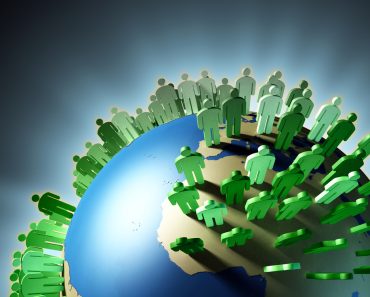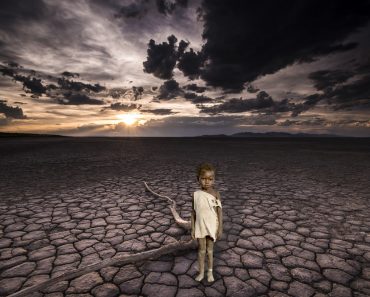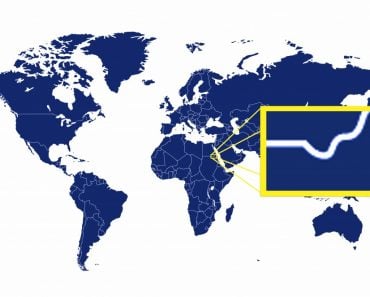Table of Contents (click to expand)
The global population is counted by considering national census data, as well as birth and death rates. However, there is still a 1-2% margin of error, making a definite population number impossible to determine.
There has been a lot of talk regarding global population in recent years, particularly in terms of sustainability, resources and the future of our planet. The global population currently hovers around 7.5 billion, according to multiple sources, and continues to increase, which is worrying to many people.
However, with 196 countries in the world (195 for those who don’t consider Taiwan a sovereign nation), it seems impossible to accurately assess how many people there truly are at a given moment. Obviously, there are people dying and being born every second of every day, so how is the global population measured?
Short Answer: By considering national census data, as well as birth and death rates, a rough estimate of global population and growth can be made, but there is still a 1-2% margin of error, making a definite population number impossible to determine.
Recommended Video for you:
Welcome To Earth: Population… ?
For approximately the past 700 years, since the Great Famine of 1315 and the Black Death in 1350, the population of the planet has experienced continuous growth, meaning that the total number of people on the planet has steadily increased. Estimates are that the global population back then was around 370 million people. Since then, the growth rate has remained relatively steady, between 1-2%, with fluctuations occurring at regular intervals.
Notably, the highest population growth rates occurred in the late 1960s, when the rate climbed over 2% for a brief period of time. Independent nations had a multitude of ways to measure population, from door-to-door censuses to vague estimates based on reported births and deaths. However, it wasn’t until 1946, when the United Nations established the Population Commission (now known as the Commission on Population and Development), that we began to have a more comprehensive picture of global population numbers.

The total tally of people on Earth is dependent on many different things, primarily the reliability of nations reporting their own population totals. Every five years, the UN updates its country-by-country population growth estimates, based on figures collected directly from governments, as well as numbers from the World Health Organization (WHO), UNICEF, Demographic and Health Surveys (DHS), and the UN Commission of Refugees. By combining these numbers and estimates, an overall growth rate is established for the planet, which is used as the metric for the following five years. If you visit a “Global Population Counter” and see the number continually tick upwards, often multiple times per second, that is generally following the rate established by the UN’s Population Division.
Uncertainty In All Things
While collecting all of these numbers is the most accurate way to count the global population, and improvements are constantly being made to the system, there is still a huge level of uncertainty to every metric and estimate. The UN admits a margin of error of 2-3% in most cases, which seems negligible, until you remember how big of a number 7.5 billion people truly is. A 2-3% error represents 150-225 million people! That’s more than the entire population of Brazil – the 5th largest country in the world!
The inaccuracy of these numbers is unavoidable for many reasons. Depending on where you live, the infrastructure and effort to accurately count population will be vastly different. In the US and the UK, for example, a highly accurate national census is conducted every 10 years; Italy hasn’t had a census since 2000, and Germany hasn’t conducted a formal census since 1987. Other countries have censuses more regularly, such as Australia, which has one every 5 years.
Those countries that have censuses are the most accurate, although strict documentation of births and deaths can also give a relatively honest picture of a nation’s population, and these numbers are actually updated more regularly. Another crucial metric to factor in is migration and refugee crises, as this can diminish one nation and bolster another, often without formal documentation. In certain cases, this can be in the millions (e.g., 1979 – 6.3 million people moved from Afghanistan to Pakistan and Iran; 2011 – 12 million displaced from Syria to Turkey, Lebanon, Jordan and Western Europe).
Finally, in many developing nations, there is simply not a reliable system in place to document births and deaths, resulting in estimates being made, but their accuracy is hardly credible. Furthermore, many countries have difficult to reach areas, so door-to-door censuses overlook large swaths of the population.
By making these predictions in five-year chunks, these projections discount factors that can change birth and death rates. if fertility rates drop even incrementally, it can cause a huge change in national population growth, just as small increases in birth rates. This can be caused by economic instability, resource limitations, climate change, conflict, disease outbreaks, etc. For example, the WHO factors in AIDS outbreaks and epidemics in its numbers for African population change and growth, which will subsequently change the remaining population’s ability to reproduce (e.g., less people means less babies being born, thus changing the overall rate).
Fertility rates in Asia, where contraception and family planning is available, hover around 1.6 births per woman, whereas in many parts of Africa, that rate skyrockets to 5 births per woman. These average rates can change quickly, however, based on a regime change, or policies regarding abortion/contraception. As a current example, if the new United States presidential administration makes it more difficult or illegal to use contraception or abortion services, the fertility rate is likely to increase, all within the 5-year gap until the next UN rate update.
To put it simple, population analysts do the best they can with the information that is available to them from a wide range of sources, but making a firm statement on total growth rate or population is simply impossible. The planet could hit 8 billion people in 2023, but it could also be 2022, or possibly 2024. Frankly, given the margin of error, we won’t ever really know!
If you’re still curious about population growth and dynamics, here is a helpful video explaining a bit more about the history of people on Earth….













